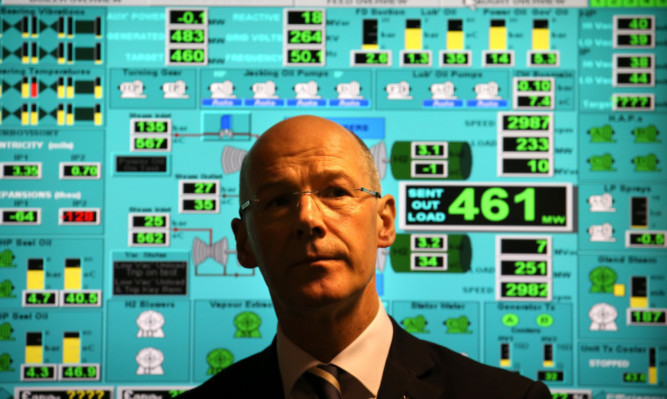Scotland could face spending cuts of £14.5 billion over the next five years, John Swinney warned as he launched a fierce attack on the UK Government’s austerity economics.
The Deputy First Minister criticised Conservative Chancellor George Osborne on the eve of his latest Budget.
He insisted Scottish Government calls for the UK to commit an additional £180 billion to public spending were a “sustainable, credible alternative to austerity”.
Mr Swinney said that Scotland’s budget had already suffered cuts amounting to a “staggering” £3.5 billion in real terms since 2009/10 and warned that worse was to come.
He argued: “There is a need to take action on the legacy of borrowing and debt inherited from the previous UK government, but the scale of cuts goes far beyond those required to deliver sustainable public finances, and damages the most vulnerable in our society.
“Between 2009/10 – 2014/15, Scotland’s budget has fallen by around 11% in real terms: within this, capital expenditure has fallen by around 34%. This means our budget has been cut by a staggering £3.5 billion in real terms since 2009/10.
“It doesn’t stop there. Scotland’s cumulative share of the cuts to day-to-day public spending over the five years to 2019-20 is forecast to be worth around £14.5 billion compared to 2014/15 levels.
“It is unconvincing to tell the public that austerity is the best – and only – course of action to tackle the deficit.”
He warned that “such cuts not only have the potential to harm public services, but potentially delay the economic recovery and make the objective of tackling the public finances that much more difficult”.
First Minister Nicola Sturgeon has already “outlined a sustainable, credible alternative to austerity and has provided the figures to back it up”.
Mr Swinney said: “This alternative would allow a more responsible reduction in the deficit whilst providing real-terms growth in public spending.
“This would lead to an additional £180 billion of expenditure at the UK level between 2016-17 and 2019-20 compared to current UK Government plans – around £14 billion of which would flow to Scotland.”
The Deputy First Minister said: “I hope that the Chancellor will have listened to reasoned proposals ahead of delivering his Budget and that economic growth and tackling inequality will be given equal representation in this final budget before the general election.”
